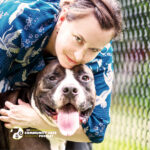
Enhancing Feline Welfare in the Community and Shelters through Behavior Insights and Socialization Techniques with Dot Baisly, Executive Director, IAABC
July 23, 2024
Connecting with Cats to Bridge the Communication Gap with Nancy Mello, Animal Communicator and Evidential Medium
July 30, 2024
At the 2024 Online Feline Leukemia Day we had a new session, called Tough Questions panel where we had presenters Margaret Tompkins, president of the Tompkins Foundation for FeLV Advocacy, and Dr. Nathalie Dowgray, head of the International Society of Feline Medicine at icatcare.org, responded to some of the “tough questions”. This is a sampling of a couple of questions from this session. If you would like to see more you can purchase access to the recording of this session and the other sessions during the day by going to Online Feline Leukemia Day. Thank you to all of our presenters for making this such a successful event.
“How can feline leukemia positive cat owners get involved in feline leukemia research?”
Answer Summary: Margaret suggested that cat owners can contribute to feline leukemia research by actively tracking and reporting data on their cats. This involves measuring viral loads using quantitative PCR and documenting changes over time. Although this data is anecdotal and not scientifically rigorous, it can still provide valuable insights. Owners can share their observations with research groups or online communities, which may help identify trends or potential treatments. Margaret also mentioned that survival data and long-term observations from cat owners have significantly impacted how researchers approach FeLV cases.
Nathalie agreed with Margaret, emphasizing that informal data, such as survival and viral load information collected by cat owners, can be very valuable. While formal research requires rigorous protocols, the longitudinal and observational data from owners contribute to the broader understanding of FeLV. She highlighted the importance of continued follow-up and tracking, even though such studies can be costly and challenging to conduct.
“We are an orphan, neonatal kitten rescue, and we are looking for best practices in combining solo kittens, combining litters around six weeks of age, and maximizing our foster capabilities. Can we test at six weeks, or what other recommendations are there?”
Answer Summary: Nathalie confirmed that testing kittens at six weeks is possible. She mentioned using IDEXX/SNAP tests for this purpose and noted that testing can be done using pooled blood samples to reduce costs, though individual testing is preferred for accuracy. If any kittens test positive, it may be best to avoid combining them with others to prevent the spread of FeLV. Negative kittens from different litters can be combined with more confidence.
Margaret added that quantitative PCR (QPCR) is another testing option but requires a larger blood sample and is typically used after two months of age. She emphasized the importance of testing each kitten individually rather than pooling samples to ensure accurate results. Nathalie also mentioned RNA PCR, which can be run on saliva and may be a more sensitive option for detecting FeLV.
Both experts agreed on the importance of socialization for kittens, advocating for combining them whenever possible to support their behavioral development and overall health.
“Why is feline leukemia not that common anymore in the UK?”
Answer Summary: Nathalie attributed the decline in feline leukemia cases in the UK primarily to effective vaccination and high rates of neutering. Pre-COVID, around 96-97% of UK cats were neutered, and many received vaccinations during neutering. This preventive approach has significantly reduced the incidence of feline leukemia, now mostly seen in localized pockets among community cats. However, post-COVID financial pressures and reduced neutering rates are concerning and could potentially lead to a resurgence of feline leukemia. Despite this, the availability of effective vaccines has contributed to a substantial decrease in cases.
“What are the general trends regarding indoor versus indoor-outdoor cats in the UK?”
Answer Summary: In the UK, the trend has traditionally been towards indoor-outdoor cats, where cats have free access to roam outside but usually return home for meals and sleep. This practice is common in both the UK and New Zealand. However, there has been a noticeable increase in indoor-only cats, particularly in urban areas and apartment living.
Nathalie shared her own experience, noting that her cats have limited outdoor access due to her yard’s high walls, which helps minimize potential risks. While outdoor cats are at risk of injuries and accidents, feline leukemia transmission is more associated with close, prolonged contact rather than casual outdoor roaming. As a result, the risk of feline leukemia from outdoor access is relatively low compared to the risk from close contact with infected cats.
I hope you enjoyed this sampling of our tough questions from Online Feline Leukemia Day. To find out more, please register to receive the Online Feline Leukemia Day recordings.




